Do All Jeep Have The Same Lug Pattern?
Are all Jeeps equipped with the same lug pattern? If you’re a Jeep enthusiast or considering buying one, this vital detail can impact your wheel choices and customization options. Let’s dive into the world of lug patterns and unveil what sets different Wrangler models apart.
No, not all Jeep Wranglers have the same lug pattern. The lug pattern can vary depending on the specific Wrangler model and year. It’s essential to check your Wrangler’s specifications to ensure compatibility when upgrading or customizing your wheels.
Keep reading and we will go through the bolt pattern on all of the Wrangler generations YJ, TJ, LJ, JK, JKU, JL and JLU.
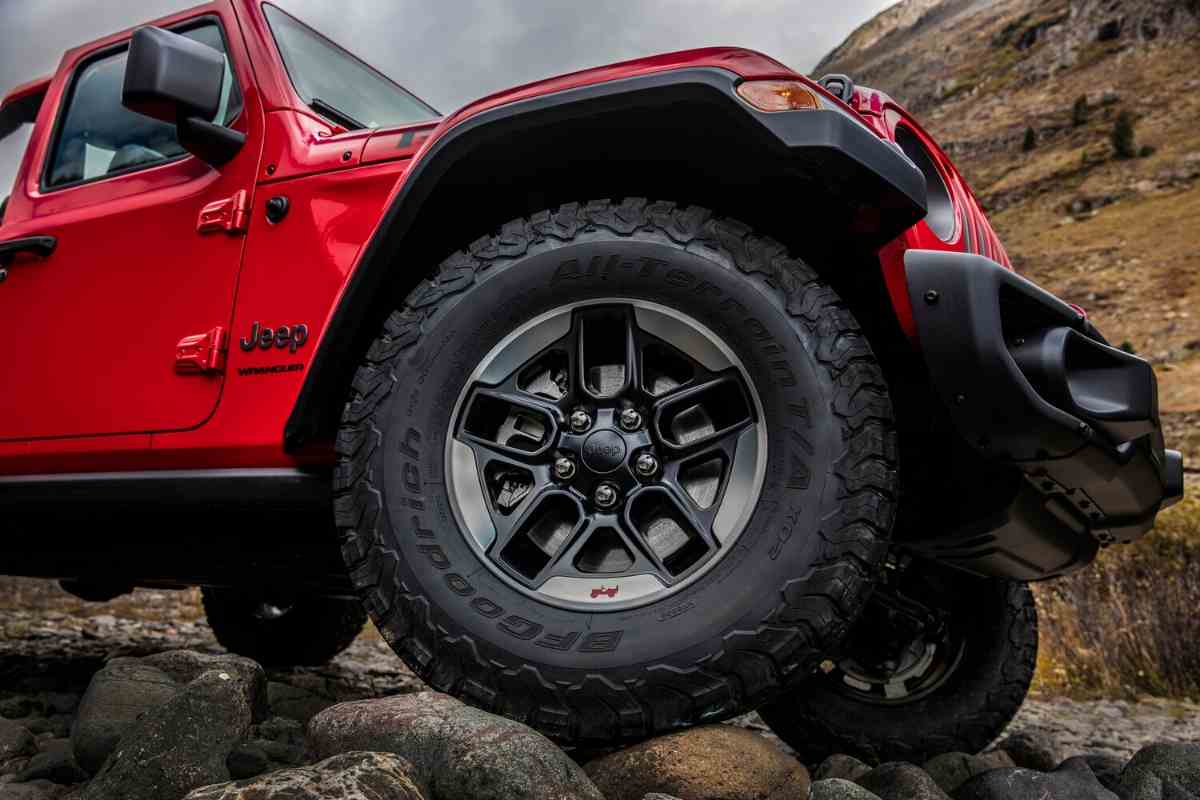
While you are researching Wrangler bolt patterns, be sure to bookmark the article: Can I Put Rubicon Tires And Rims On A Sport Wrangler?
Understanding Lug Patterns
Jeep Wrangler owners looking to change their wheels must first understand their vehicle’s lug pattern, which is also known as the bolt pattern.
The lug pattern is the number of bolts and the distance between them on the wheel hub. In other words, it’s the number of studs or bolt holes on the wheel and the distance between them.
The lug pattern is crucial because it determines which wheels will fit on your Jeep Wrangler. If you purchase wheels with the wrong bolt pattern, they will not fit properly, and this could lead to safety issues.
Jeep Wrangler models have different lug patterns depending on the generation. Here is a breakdown of the lug patterns for each generation:
- 1987-2006 Jeep Wrangler – The lug pattern for this generation is 5×4.5″ (5×114.3mm). It means that the wheel has five lug holes with a diameter of 114.3mm or 4.5 inches.
- 2007-2023 Jeep Wrangler – The lug pattern for this generation is 5×5″ (5×127 mm). It means that the wheel has five lug nuts on the wheel, forming a 5″-diameter circle.
It’s essential to note that the lug pattern is not the same as the stud or bolt size. The stud or bolt size is the diameter of the stud or bolt that fits through the bolt hole.
The lug pattern, on the other hand, is the number of studs or bolt holes and the distance between them.
To determine your Jeep Wrangler’s lug pattern, you need to count the number of bolt holes on your wheel and measure the distance between them.
You can use a ruler to measure the distance from the center of one lug to the outermost edge of the opposite lug to get the pattern circle diameter.
In conclusion, understanding your Jeep Wrangler’s lug pattern is crucial when purchasing new wheels. Ensure you get the correct lug pattern to avoid safety issues and ensure the wheels fit properly.
Jeep Wrangler Generations Overview
The Jeep Wrangler is a rugged and versatile vehicle that has been around for several decades.
It has undergone several changes and upgrades over the years, resulting in different vehicle generations.
Each generation has its own unique features, including different lug patterns.
YJ (1987-1995)
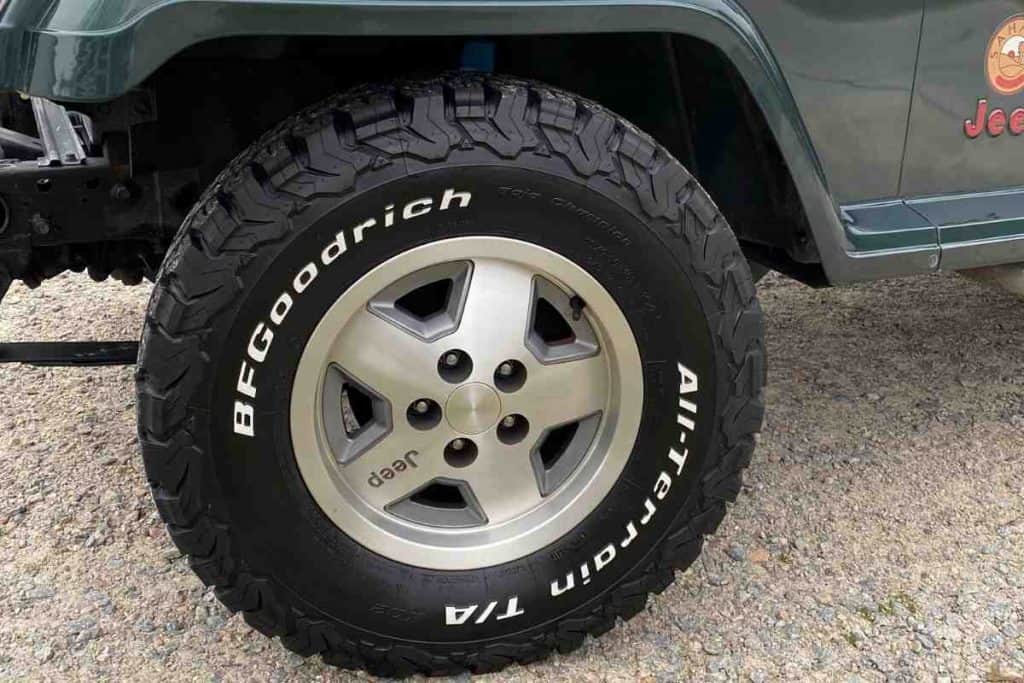
The first generation of the Jeep Wrangler, known as the YJ, features a 5-lug wheel configuration with a 5×114.3mm or 5×4.5 inches bolt pattern.
This pattern is designed to fit the stock 15-inch rims, which have a center bore of 71.6mm and a wheel offset of 32mm. To secure the rim onto the wheel mounting hub, it is fastened with a 1/2-20 lug nut.
TJ (1997-2006)
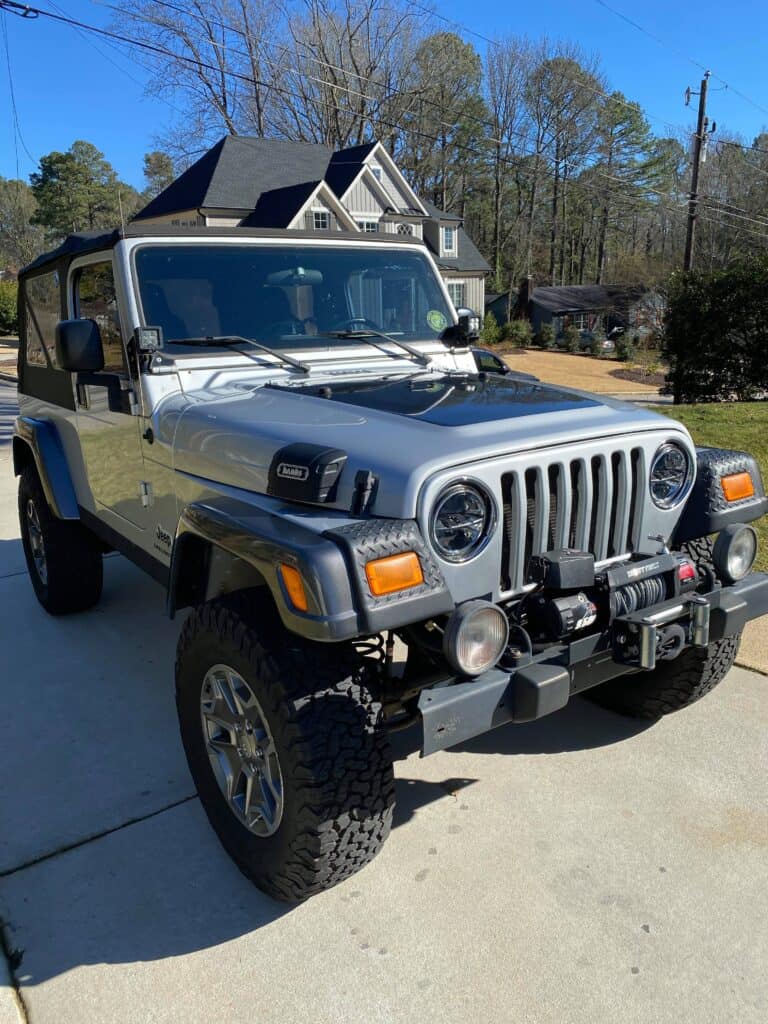
The second generation of the Jeep Wrangler, known as the TJ, features a similar 5-lug wheel configuration with a 5×114.3mm or 5×4.5 inches bolt pattern.
However, the TJ model has a different center bore of 71.5mm and a different wheel offset of 30mm. It also uses a 1/2-20 lug nut to secure the rim onto the wheel mounting hub.
JK (2007-2018)
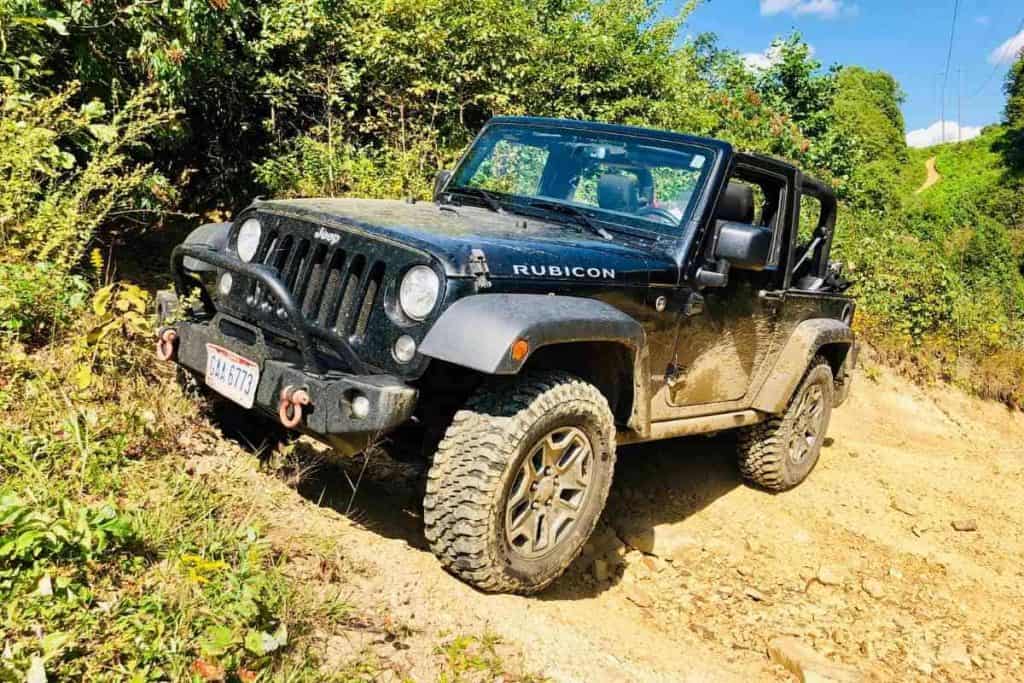
The third generation of the Jeep Wrangler, known as the JK, features a 5-lug wheel configuration with a 5×127mm or 5×5 inches bolt pattern.
This pattern is designed to fit the stock 17-inch rims, which have a center bore of 71.5mm and a wheel offset of 44.45mm.
To secure the rim onto the wheel mounting hub, it is fastened with a 1/2-20 lug nut.
JL (2018-Present)

The fourth and current generation of the Jeep Wrangler, known as the JL, features a 5-lug wheel configuration with a 5×127mm or 5×5 inches bolt pattern.
This pattern is designed to fit the stock 17-inch rims, which have a center bore of 71.5mm and a wheel offset of 44.45mm.
To secure the rim onto the wheel mounting hub, it is fastened with a 14mmx1.5 lug nut.
The table below summarizes the lug pattern of each Jeep Wrangler generation:
| Generation | Lug Pattern |
|---|---|
| YJ | 5×114.3mm |
| TJ | 5×114.3mm |
| JK | 5×127mm |
| JL | 5×127mm |
It is important to note that different Jeep Wrangler models, such as the Rubicon, Sahara, Sport, and Unlimited, may have different lug patterns depending on the model year.
It is always best to consult the owner’s manual or a trusted mechanic to ensure that the correct lug pattern is used when replacing or upgrading wheels on a Jeep Wrangler.
Lug Patterns of Each Jeep Wrangler Generation
The lug pattern of a Jeep Wrangler refers to the number of lug holes on the wheel and the distance between them.
The lug pattern is essential when selecting aftermarket wheels, as it determines whether the wheels will fit the vehicle or not.
In this section, we will discuss the lug patterns of each Jeep Wrangler generation.
Jeep Wrangler YJ (1987-1995)
The first generation of Jeep Wrangler, also known as the YJ, has a lug pattern of 5×4.5 inches (5×114.3mm).
This means that the wheels have five lug holes with a diameter of 114.3mm or 4.5 inches. The lug pattern of the Jeep Wrangler YJ is the same as that of the Jeep Cherokee XJ and the Jeep Grand Cherokee ZJ.
Jeep Wrangler TJ (1997-2006)
The second generation of Jeep Wrangler, also known as the TJ, has a lug pattern of 5×4.5 inches (5×114.3mm). The Jeep Wrangler TJ was available in several trim levels, including the Sport, Sahara, Rubicon, and Unlimited.
The lug pattern of the Jeep Wrangler TJ is the same as that of the Jeep Cherokee XJ and the Jeep Grand Cherokee ZJ.
Jeep Wrangler JK (2007-2018)
The third generation of Jeep Wrangler, also known as the JK, has a lug pattern of 5×5 inches (5x127mm). This means that the wheels have five lug holes with a diameter of 127mm or 5 inches.
The Jeep Wrangler JK was available in several trim levels, including the Sport, Sahara, Rubicon, and Unlimited.
Jeep Wrangler JL (2018-Present)
The fourth and current generation of Jeep Wrangler, also known as the JL, has a lug pattern of 5×5 inches (5x127mm).
The Jeep Wrangler JL was introduced in 2018 and is available in several trim levels, including the Sport, Sahara, Rubicon, and Unlimited.
![Do All Jeep Have The Same Lug Pattern? 6 Do All Jeep Wranglers Have The Same Lug Pattern? [YJ, TJ, LJ, JK, & JL]](https://fourwheeltrends.com/wp-content/uploads/2020/05/Do-All-Jeep-Wranglers-Have-The-Same-Lug-Pattern_-YJ-TJ-LJ-JK-JL-3-1024x683.jpg)
Table of Jeep Wrangler Lug Patterns
| Generation | Lug Pattern |
|---|---|
| YJ | 5×4.5 inches |
| TJ | 5×4.5 inches |
| JK | 5×5 inches |
| JL | 5×5 inches |
In summary, the lug pattern of a Jeep Wrangler varies depending on the generation.
The Jeep Wrangler YJ and TJ have a lug pattern of 5×4.5 inches, while the Jeep Wrangler JK and JL have a lug pattern of 5×5 inches.
It’s important to keep the lug pattern in mind when selecting aftermarket wheels for your Jeep Wrangler, as it will determine whether the wheels will fit the vehicle or not.
Wheel and Tire Specifications
The Jeep Wrangler is a popular vehicle among off-road enthusiasts, and it’s essential to know each generation’s wheel and tire specifications to ensure proper fitment and performance.
This section will cover the wheel and tire specifications for each Jeep Wrangler generation.
First Generation (1987-1995)
The first-generation Jeep Wrangler, also known as the YJ, had a lug pattern of 5×4.5 inches (5×114.3mm) and a center bore of 71.5mm.
The backspacing for the stock wheels was 5.25 inches, and the offset was zero. The recommended tire size for the YJ was 225/75R15, and the tire pressure was 26 psi.
Second Generation (1997-2006)
The second-generation Jeep Wrangler, also known as the TJ, had a lug pattern of 5×4.5 inches (5×114.3mm) and a center bore of 71.5mm.
The backspacing for the stock wheels was 5.5 inches, and the offset was -19mm. The recommended tire size for the TJ was 30×9.5R15, and the tire pressure was 30 psi.
Third Generation (2007-2018)
The third-generation Jeep Wrangler, also known as the JK, had a lug pattern of 5×5 inches (5x127mm) and a center bore of 71.5mm.
The backspacing for the stock wheels was 6.25 inches, and the offset was 44.45mm. The recommended tire size for the JK was 255/75R17, and the tire pressure was 37 psi.
Fourth Generation (2018-Present)
The fourth-generation Jeep Wrangler, also known as the JL, has a lug pattern of 5×5 inches (5x127mm) and a center bore of 71.5mm.
The backspacing for the stock wheels is 6.25 inches, and the offset is 44.45mm. The recommended tire size for the JL is 245/75R17, and the tire pressure is 37 psi.
It’s important to note that these specifications are for the stock wheels and tires.
If you plan on upgrading to aftermarket wheels or tires, it’s essential to consider factors such as backspacing, offset, and tire size to ensure proper fitment and performance.
Understanding Wheel Fitment and Offset
![Do All Jeep Have The Same Lug Pattern? 7 Do All Jeep Wranglers Have The Same Lug Pattern? [YJ, TJ, LJ, JK, & JL]](https://fourwheeltrends.com/wp-content/uploads/2020/05/Do-All-Jeep-Wranglers-Have-The-Same-Lug-Pattern_-YJ-TJ-LJ-JK-JL-2-1024x683.jpg)
Wheel fitment and offset are crucial aspects to consider when upgrading or replacing wheels on a Jeep Wrangler.
Fitment refers to the compatibility of the wheel with the vehicle’s suspension, brakes, and fenders. On the other hand, offset refers to the distance between the centerline of the wheel and the hub mounting surface.
Jeep Wrangler generations have different lug patterns and offset requirements.
The first and second-generation Jeep Wranglers have a 5×4.5″ (5×114.3mm) bolt pattern, while the third and fourth-generation models have a 5×5″ (5x127mm) bolt pattern.
The fifth-generation Jeep Wrangler has a 5×5.5″ (5×139.7mm) bolt pattern.
The offset can be positive, negative, or zero. A positive offset means that the hub mounting surface is closer to the front of the wheel, while a negative offset means that the hub mounting surface is closer to the back of the wheel.
A zero offset means that the hub mounting surface is in the center of the wheel.
When upgrading or replacing wheels, it’s essential to consider the backspacing, which is the distance between the wheel’s mounting surface and the wheel’s back edge.
The backspacing determines how much clearance the wheel has with the suspension components and how far the wheel sticks out from the fender.
Understanding wheel fitment and offset is crucial when upgrading or replacing wheels on a Jeep Wrangler.
The table below shows the lug pattern and offset requirements for each Jeep Wrangler generation.
| Jeep Wrangler Generation | Lug Pattern | Offset |
|---|---|---|
| First and Second | 5×4.5″ | Varies |
| Third and Fourth | 5×5″ | Varies |
| Fifth | 5×5.5″ | Varies |
Note: The offset varies depending on the wheel size and width.
Customizing Your Jeep Wrangler Wheels
Customizing your Jeep Wrangler wheels is a great way to add a personal touch to your vehicle. There are many options available for customizing your wheels, including different sizes, finishes, and materials.
When it comes to customizing your Jeep wheels, you have two main options: steel wheels or aftermarket wheels.
Steel wheels are the original equipment manufacturer (OEM) wheels that come with your Jeep Wrangler.
They are durable and can withstand harsh off-road conditions. However, they are heavy and can affect your vehicle’s performance.
Aftermarket wheels, on the other hand, are designed to improve your vehicle’s performance and appearance.
They are available in a wide range of sizes, finishes, and styles. Aftermarket wheels are lighter than steel wheels, which can improve your vehicle’s acceleration and handling.
If you decide to customize your Jeep Wrangler wheels, it is important to consider the lug pattern.
The lug pattern for Jeep Wrangler models from 2007 and beyond is 5-on-5 or 5×5 inches. Previous models have a 5×4.5-inch pattern.
This means that the wheel has five bolt holes, and the diameter of the imaginary circle formed by these holes is either 5 inches or 4.5 inches.
When choosing aftermarket wheels, it is important to make sure they have the correct lug pattern for your Jeep Wrangler.
Most aftermarket wheels are designed to fit a wide range of vehicles, so it is important to double-check the fitment before making a purchase.
Here are some tips for customizing your Jeep Wrangler wheels:
- Consider the size and finish of the wheels to match your vehicle’s style and personality.
- Choose wheels that are lightweight and durable to improve your vehicle’s performance.
- Check the lug pattern of the wheels to ensure a proper fit.
- Consider purchasing a full set of wheels, including spare, to maintain a consistent look.
Overall, customizing your Jeep Wrangler wheels is a great way to add a personal touch to your vehicle. Whether you choose steel wheels or aftermarket wheels, make sure to choose a style that matches your vehicle’s personality and improves its performance.
Important Considerations for Lug Patterns
When it comes to Jeep Wrangler lug patterns, there are a few important considerations to keep in mind. Here are some key factors to consider when looking at lug patterns for your Jeep Wrangler:
Stud Sizes and Lug Size
The size of the studs and lugs is important to consider when replacing your Jeep’s wheels. The most common stud size for Jeep Wranglers is 14mm x 1.5. Additionally, the lug size is typically 13/16″. It is important to make sure that your new wheels are compatible with these sizes in order to ensure a proper fit.
Lug Pattern Circle Diameter
The lug pattern circle diameter is the distance between the center of one lug to the outermost edge of the opposite lug. The Jeep Wrangler lug pattern circle diameter is typically 114.3mm or 4.5 inches. It is important to measure this distance accurately in order to ensure that your new wheels will fit properly.
Torque Specification
When installing new wheels on your Jeep Wrangler, it is important to follow the torque specification outlined in your owner’s manual. This will ensure that your wheels are properly secured and will not come loose while driving.
Five Bolts
Jeep Wranglers typically have five bolts in their lug pattern. It is important to make sure that your new wheels are compatible with this five-bolt pattern in order to ensure a proper fit.
Compatible Lug Wrench
When purchasing new wheels for your Jeep Wrangler, it is important to make sure that the lug wrench you have is compatible with the new lug pattern.
If your current lug wrench is not compatible, you will need to purchase a new one in order to properly install your new wheels.
In summary, when looking at lug patterns for your Jeep Wrangler, it is important to consider the stud sizes, lug size, lug pattern circle diameter, torque specification, and compatible lug wrench.
By keeping these factors in mind, you can ensure that your new wheels will fit properly and be properly secured.
Share Your Insights With US
Did we forget something, get something right (or wrong)? We’d love to hear your insights! Share your automotive experiences based on our article in the comments below. Your input enriches our community’s knowledge. Thanks in advance for sharing!
Impact of Lug Patterns on Jeep Performance
The lug pattern on a Jeep Wrangler has a significant impact on its overall performance. The lug pattern determines the number of bolt holes and the spacing between them.
Choosing the right lug pattern for your Jeep is essential, as it affects the vehicle’s handling, suspension, and braking.
Here are some ways the lug pattern can impact the Jeep’s performance:
- Handling: Lug patterns with larger bolt circles are more stable and provide better handling. The larger bolt circle distributes the weight of the vehicle more evenly, reducing the risk of wobbling or instability at high speeds.
- Suspension: The lug pattern can also affect the suspension of the Jeep. Lug patterns with larger bolt circles provide a wider base for the tires, which improves the suspension’s ability to absorb shocks and bumps on rough terrain.
- Brakes: The lug pattern can impact the braking system of the Jeep. It is essential to choose a lug pattern that is compatible with the brake system. The lug pattern should allow the brake calipers to fit correctly over the brake rotors.
- Road Driving: Lug patterns with smaller bolt circles are suitable for road driving, as they provide better acceleration and handling on smooth surfaces. However, they may not be suitable for off-road driving, as they do not provide the same level of stability and suspension as larger bolt circles.
- Factory Specifications: It is important to choose a lug pattern that matches the factory specifications of your Jeep. The factory specifications consider the vehicle’s weight, size, and performance. Choosing a lug pattern that deviates from the factory specifications can impact the overall performance of the Jeep.
Overall, the lug pattern is an essential factor to consider when choosing wheels for your Jeep.
It can impact the vehicle’s handling, suspension, and braking. Choosing a lug pattern compatible with the brake system, matches the factory specifications, and suits your driving needs is important.
Here is an unordered list of some of the things to consider when choosing a lug pattern for your Jeep:
- Compatibility with the brake system
- Factory specifications
- Driving needs (road vs. off-road)
- Suspension requirements
- Handling preferences
In summary, the lug pattern is a crucial factor to consider when choosing wheels for your Jeep. It can impact the vehicle’s performance and should be chosen carefully to ensure optimal handling, suspension, and braking.
Additional Information on Jeep Gladiator
The Jeep Gladiator is a mid-size pickup truck that was introduced in 2019. It is based on the Wrangler platform and has a similar design and off-road capabilities.
Here are some additional details about the Jeep Gladiator:
- Bolt Pattern: The Jeep Gladiator has a bolt pattern of 5×127 (or 5×5 inches), which is the same for all its models, regardless of their configuration. This information is important to know when shopping for new wheels, as some may not be compatible with your Gladiator’s bolt pattern.
- Wheel and Tire Sizes: The 2021 Jeep Gladiator comes with 17-inch wheels as standard, with 245/75R17 all-terrain tires. However, there are many other wheel and tire options available, depending on your needs and preferences. For example, you can opt for larger wheels (up to 22 inches) and more aggressive tires for better off-road performance.
- Trim Levels: The Jeep Gladiator is available in four trim levels: Sport, Sport S, Overland, and Rubicon. Each trim level offers different features and options, such as different wheel and tire packages, upgraded suspension systems, and more advanced off-road capabilities.
- Payload and Towing Capacity: The Jeep Gladiator has a maximum payload capacity of 1,700 pounds and a maximum towing capacity of 7,650 pounds. These figures vary depending on the model and configuration, so it’s important to check the specifications of your specific Gladiator before towing or hauling heavy loads.
- Fuel Economy: The Jeep Gladiator is not known for its fuel efficiency, as it is a heavy and powerful off-road vehicle. According to the EPA, the 2021 Gladiator gets an estimated 17 mpg in the city and 22 mpg on the highway, for a combined rating of 19 mpg. However, these figures may vary depending on your driving habits and the conditions of the road.
In summary, the Jeep Gladiator is a versatile and capable mid-size pickup truck that offers a wide range of features and options for off-road enthusiasts.
Whether you’re looking for a reliable workhorse or a fun weekend adventure vehicle, the Gladiator has something to offer.
Frequently Asked Questions
What is the bolt pattern on a Jeep Wrangler JK?
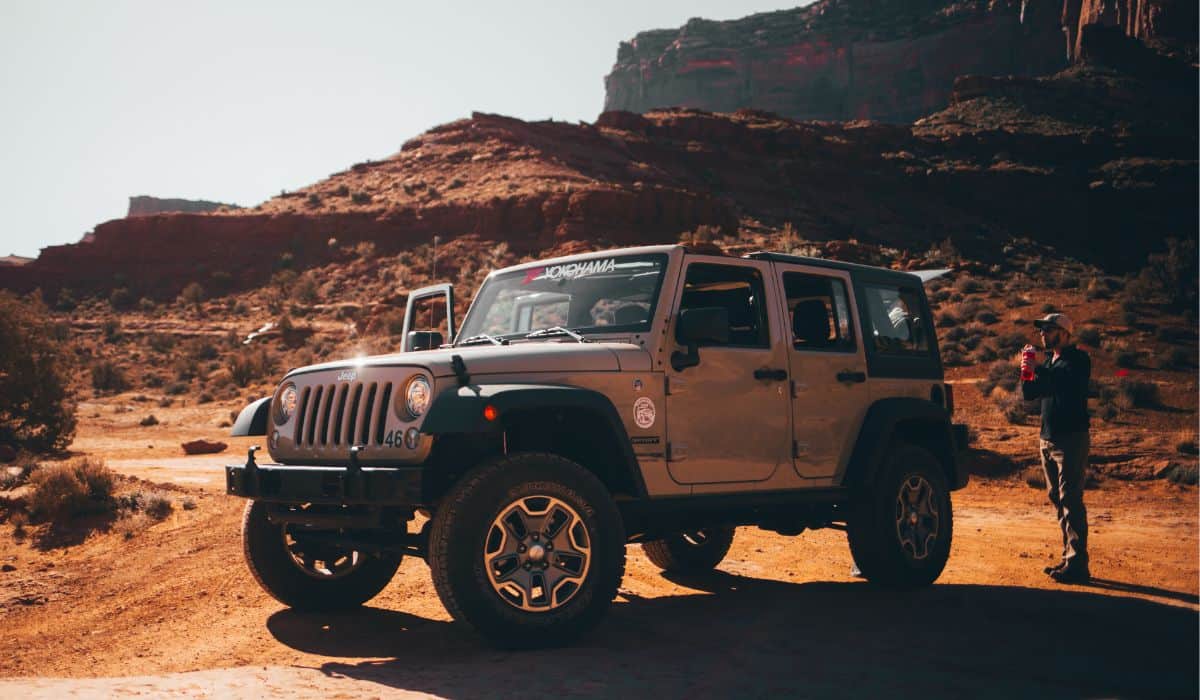
All Jeep Wrangler JK models have a bolt pattern of 5×5 inches or 5x127mm. This means that the wheels have five lug holes with a diameter of 127mm or 5 inches.
The hub center bore on these models is 71.5mm.
What is the bolt pattern on a Jeep Wrangler JL?
Similar to the JK models, all Jeep Wrangler JL models have a bolt pattern of 5×5 inches or 5x127mm.
This means that the wheels have five lug holes with a diameter of 127mm or 5 inches. The hub center bore on these models is 71.5mm.
What is the bolt pattern on a Jeep Wrangler TJ?
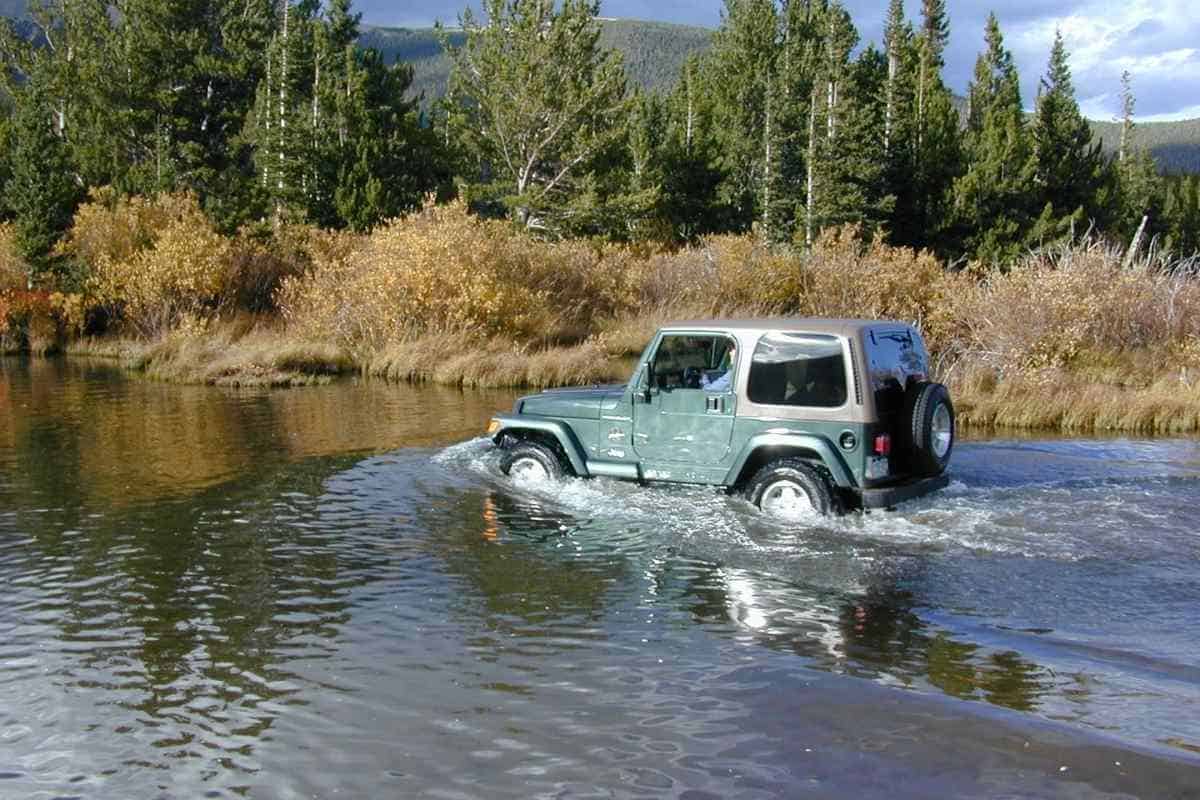
Jeep Wrangler TJ models have a bolt pattern of 5×4.5 inches or 5×114.3mm.
This means that the wheels have five lug holes with a diameter of 114.3mm or 4.5 inches. The hub center bore on these models is 71.5mm.
What is the bolt pattern on a Jeep Wrangler YJ?
Jeep Wrangler YJ models have a bolt pattern of 5×4.5 inches or 5×114.3mm. This means that the wheels have five lug holes with a diameter of 114.3mm or 4.5 inches.
The hub center bore on these models is 71.5mm.
What Jeeps have 5×4.5 bolt pattern?

Jeep Wrangler YJ, TJ, and JK models all have a 5×4.5 bolt pattern. Some Jeep Cherokee XJ and Grand Cherokee ZJ models also have this bolt pattern.
Do all Jeep rims fit all Jeeps?
No, not all Jeep rims fit all Jeeps. The bolt pattern and hub center bore must match the specifications of the specific Jeep model.
However, some Jeep models may have the same bolt pattern and hub center bore, allowing for interchangeable rims. It is important to consult the specifications of the specific Jeep model before purchasing new rims.
- Here is a list of Jeep models and their corresponding bolt patterns:
- Jeep Wrangler YJ, TJ, and JK: 5×4.5 inches or 5×114.3mm
- Jeep Wrangler JL: 5×5 inches or 5x127mm
- Jeep Cherokee XJ: 5×4.5 inches or 5×114.3mm
- Jeep Grand Cherokee ZJ: 5×4.5 inches or 5×114.3mm
